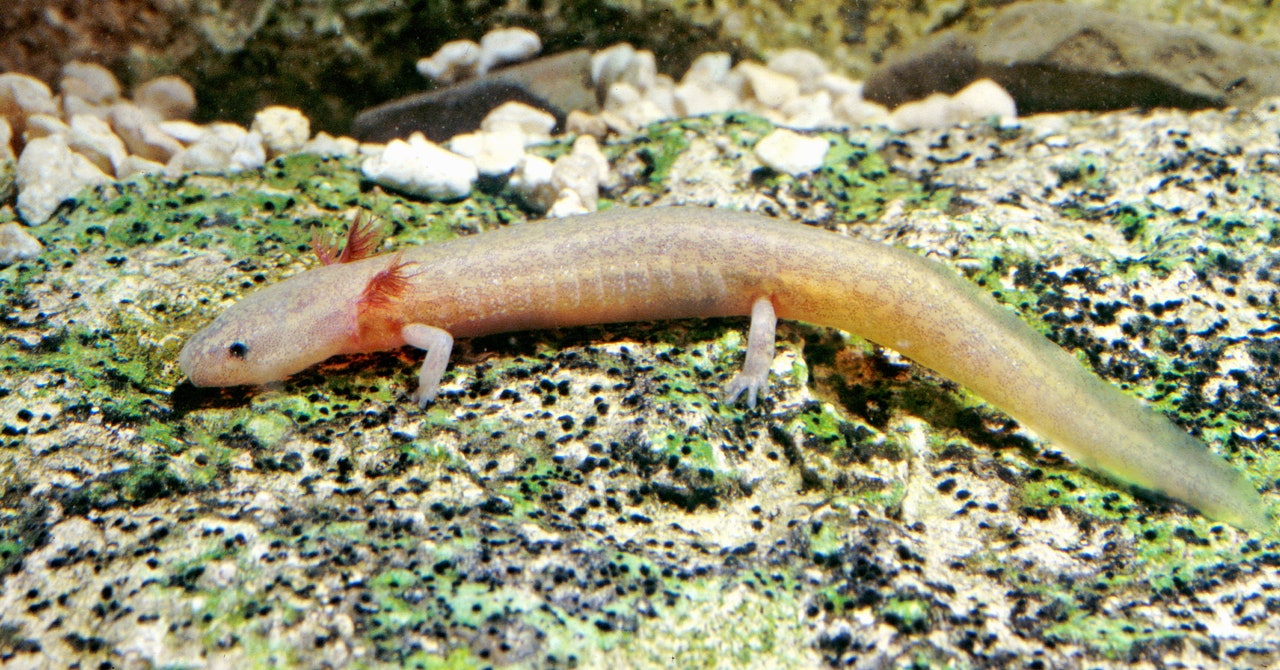
India’s Western Ghats—a mountain chain that runs down the country’s southwestern coast—may also struggle. The Western Ghats are home to many unusual subterranean freshwater fish, including the dragon snakehead, which looks like an armored eel and may represent a relic population that’s existed for a hundred million years. But the region is also densely populated by humans, putting tremendous pressure on its aquifers. By 2050, more than 80 million people there may have insufficient water.
Invasive species pose another threat, such as catfish or tilapia in the Western Ghats and the American red swamp crayfish in Europe, which have invaded wells and caves.
Groundwater ecosystems also face pollution. Some of this is accidental contamination from mining spoils or agricultural fertilizers. And some is purposeful, like in Slovenia, where a capacitor factory disposed of toxic waste for two decades by simply pouring it into sinkholes, contaminating olm habitats, or in India, where it’s common practice to use chemicals to disinfect wells.
In some cases, legislation and lawsuits have forced the preservation of at least some stygofauna. Barton Springs Pool is a deep, cold, spring-fed recreational pool near downtown Austin and has been a popular swimming venue for more than a century. (Long before the pool was built up, the springs themselves were used by Indigenous people). For some of that time, the city kept the natural pool in welcoming conditions for human visitors using intensive cleaning methods like hot water, high-pressure hoses, and chlorine.
But humans aren’t the only creatures there—deep in the springs that feed the pool live two different salamander species: the Barton Springs salamander, officially named in 1993, and the Austin blind salamander, discovered in 2001.
In 1992, the citizens of Austin passed an ordinance that restricted development in the recharge zones and limited pollution in the springs. That year, the city also stopped using chlorine to control algae at the pool. After the federal government listed the Barton Springs salamander as endangered in accordance with the Endangered Species Act in 1997, other practices were changed to protect the salamanders. Today, as part of an agreement with the US Fish and Wildlife Service, the city can still use the pool for swimming and can clean it (though with less destructive methods: High-pressure washing in salamander habitats is banned, and dropping the water level for cleaning is restricted). But in return, the city also has to help protect the ecosystem.
In 1998, as part of that protection, Austin launched a captive breeding program for the salamanders. Now a captive population of about 240 Barton Springs salamanders and about 50 Austin blind salamanders live inside a small facility a few minutes from the springs.
“Our whole goal, and it’s a pretty standard goal for captive breeding programs, is to maintain 90 percent gene diversity for a hundred years,” said Dee Ann Chamberlain, an environmental scientist and the head of the program.
In addition to allowing for the study of the animals, the program also provides a failsafe in case of disaster. Barton Springs depends on water that enters the aquifer and flows in from the surface through nearby areas called recharge zones. A nearby chemical spill from, say, a crashed tanker truck or industrial accident could spell disaster for the salamanders.


